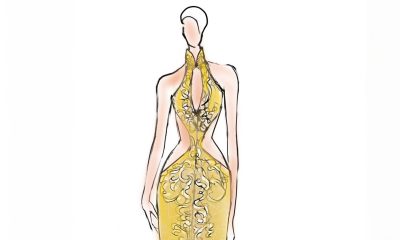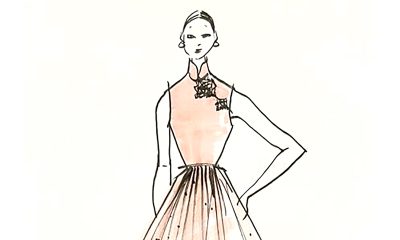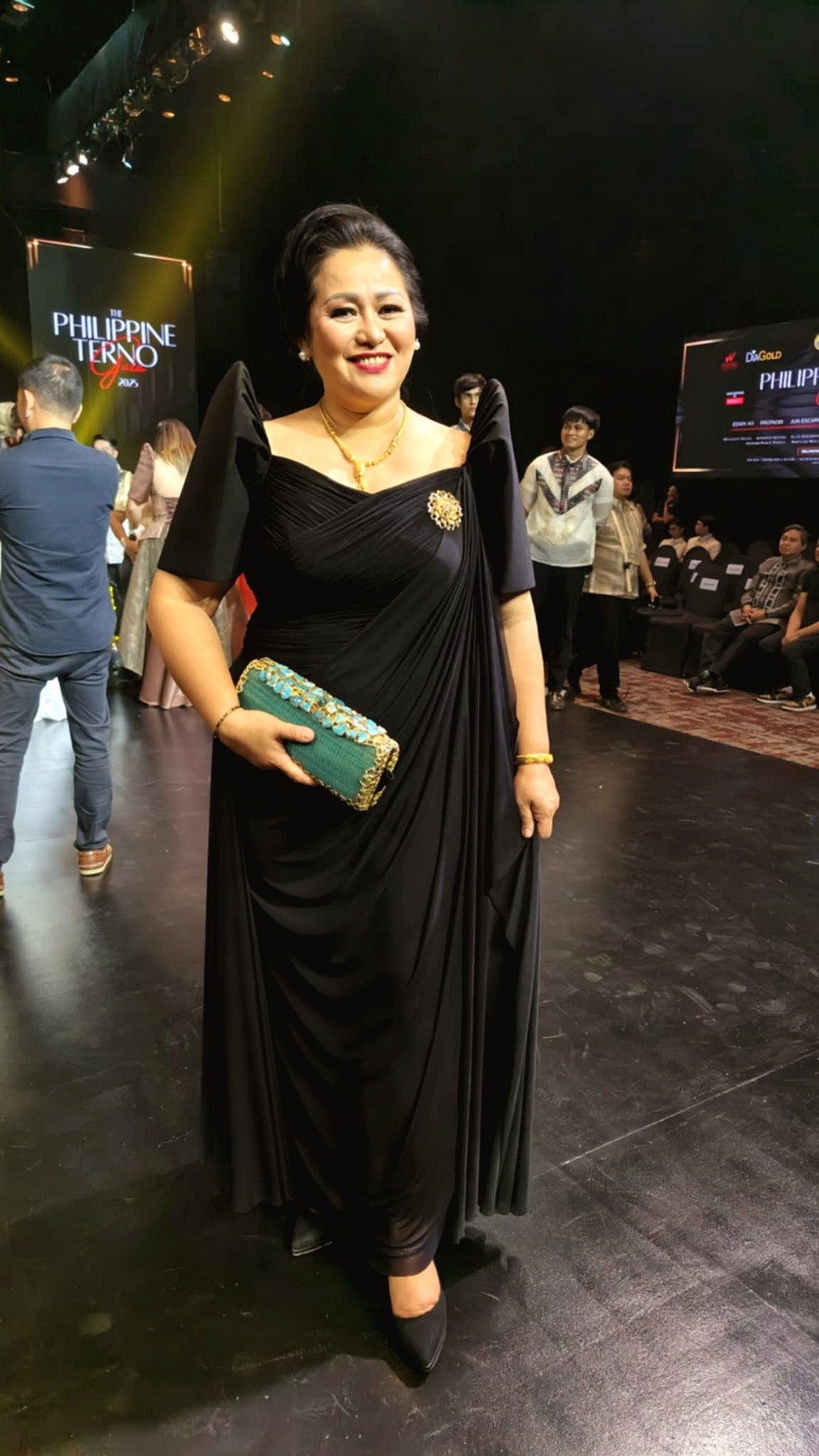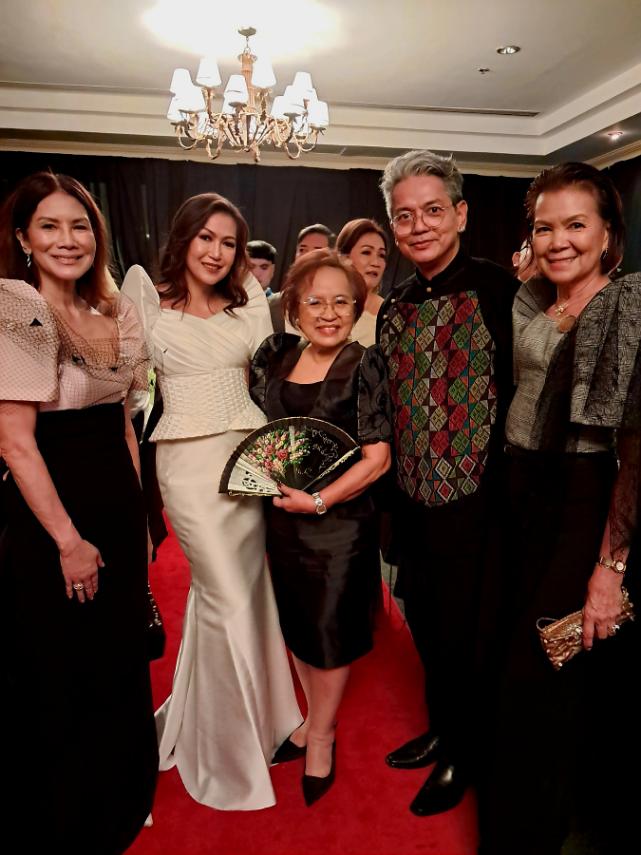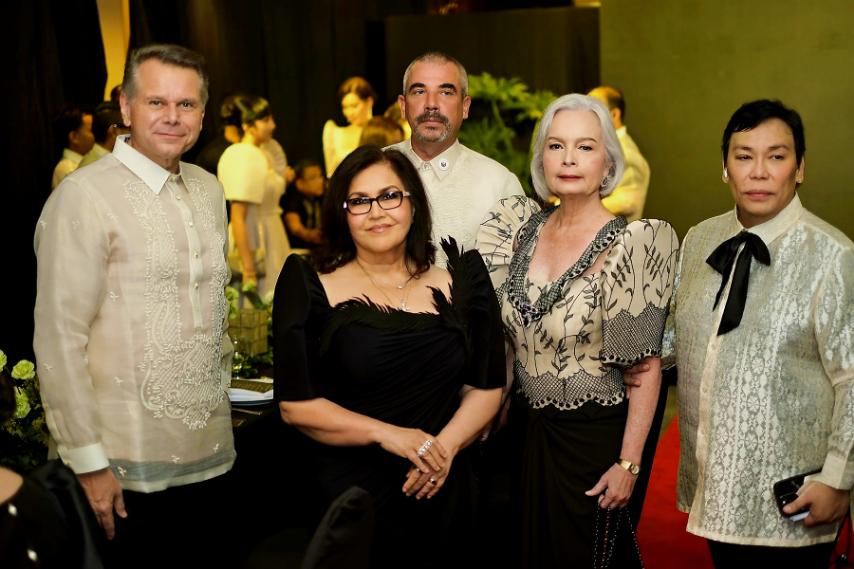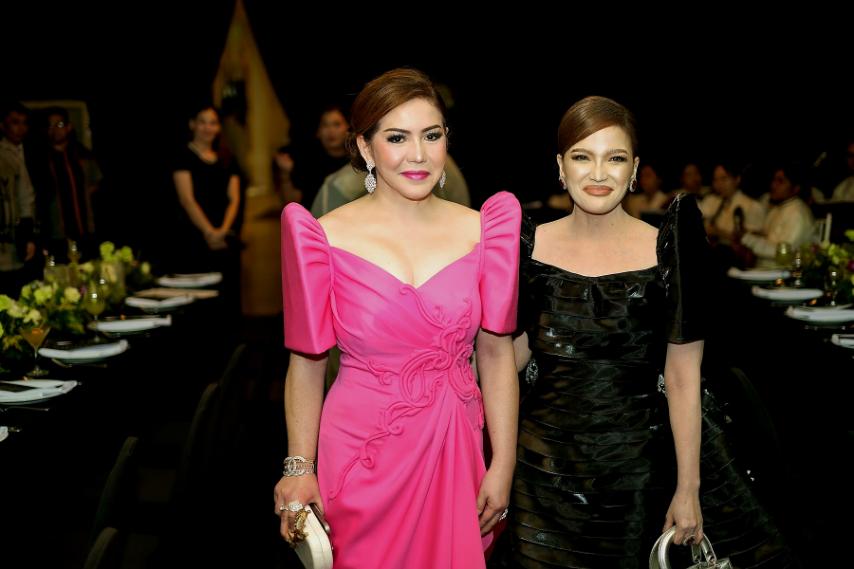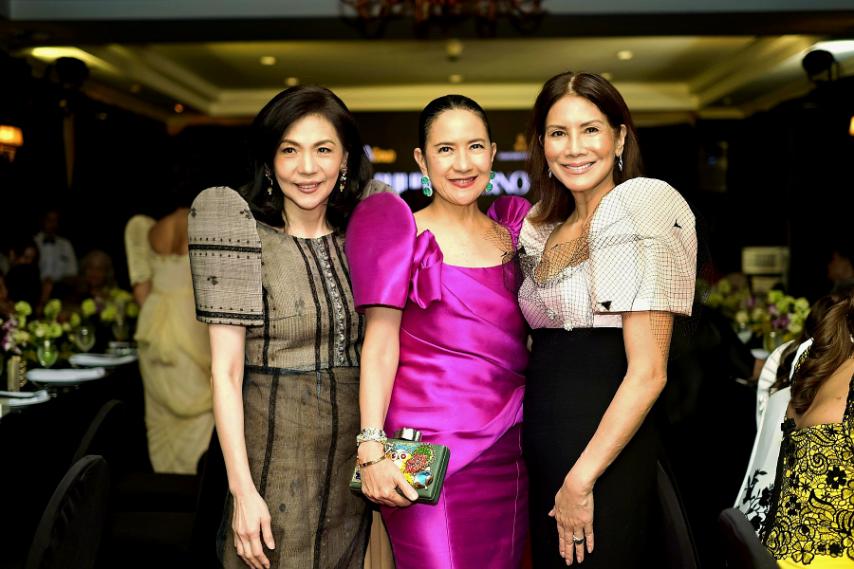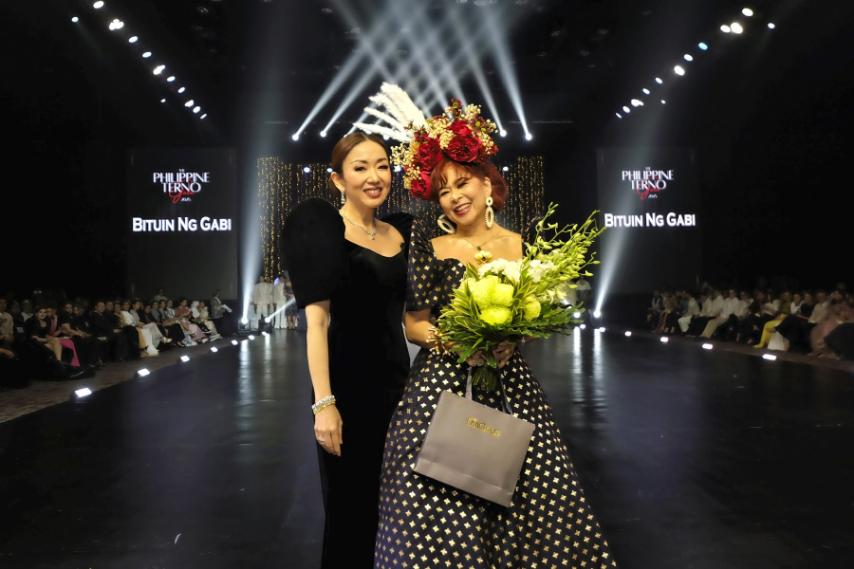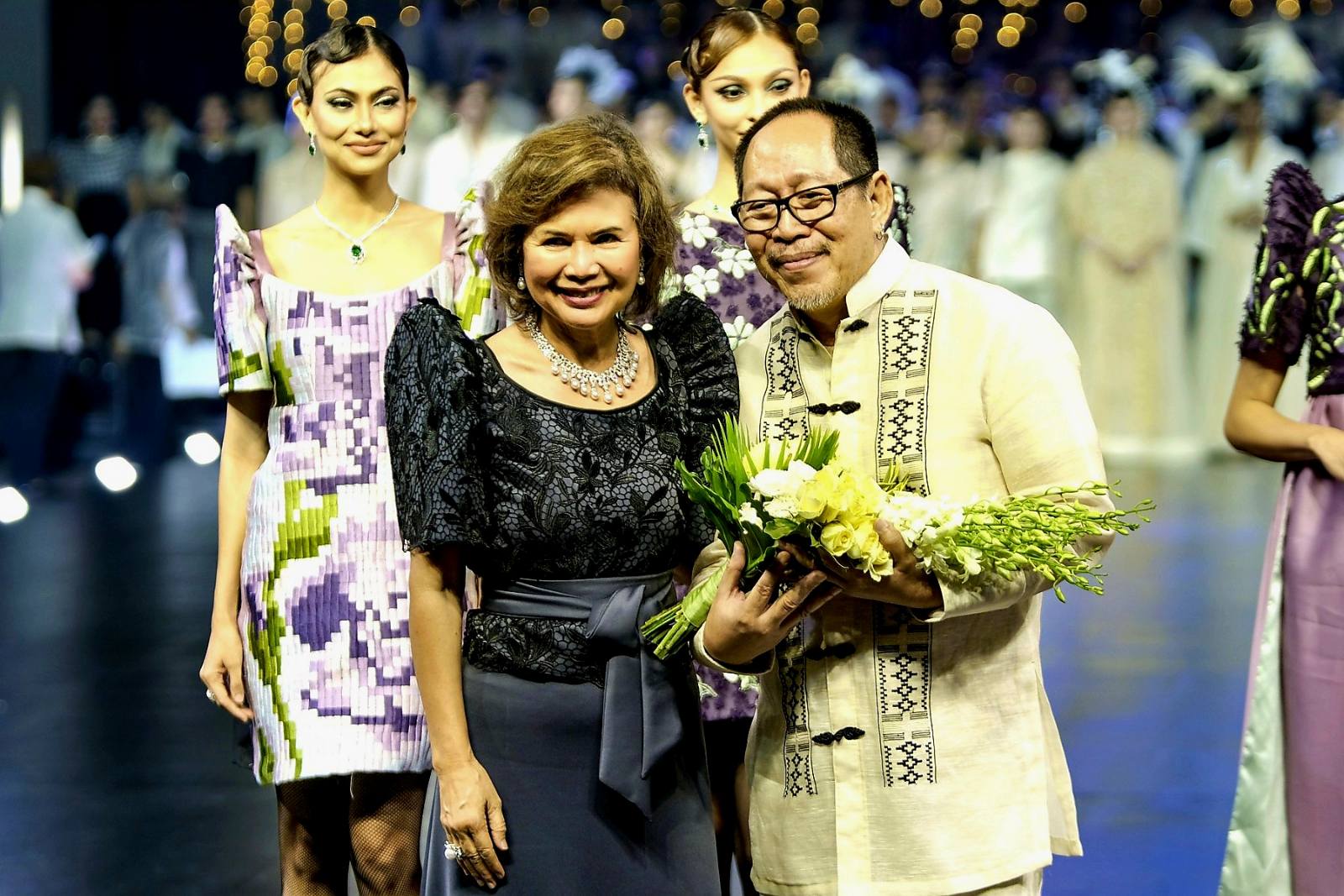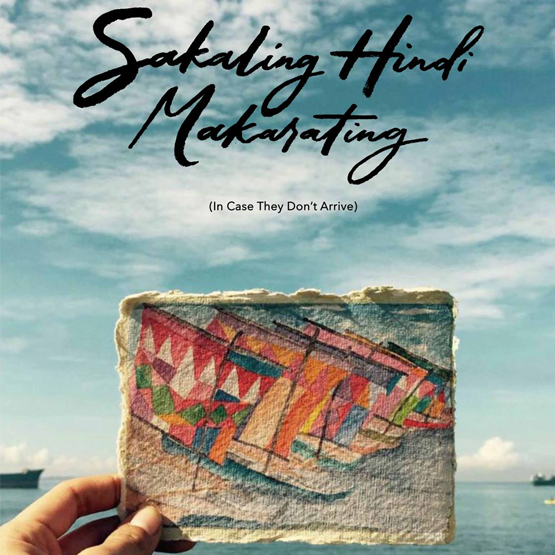Fashion
The Qipao As Interpreted by Innovative Filipino Designers: RAJO LAUREL
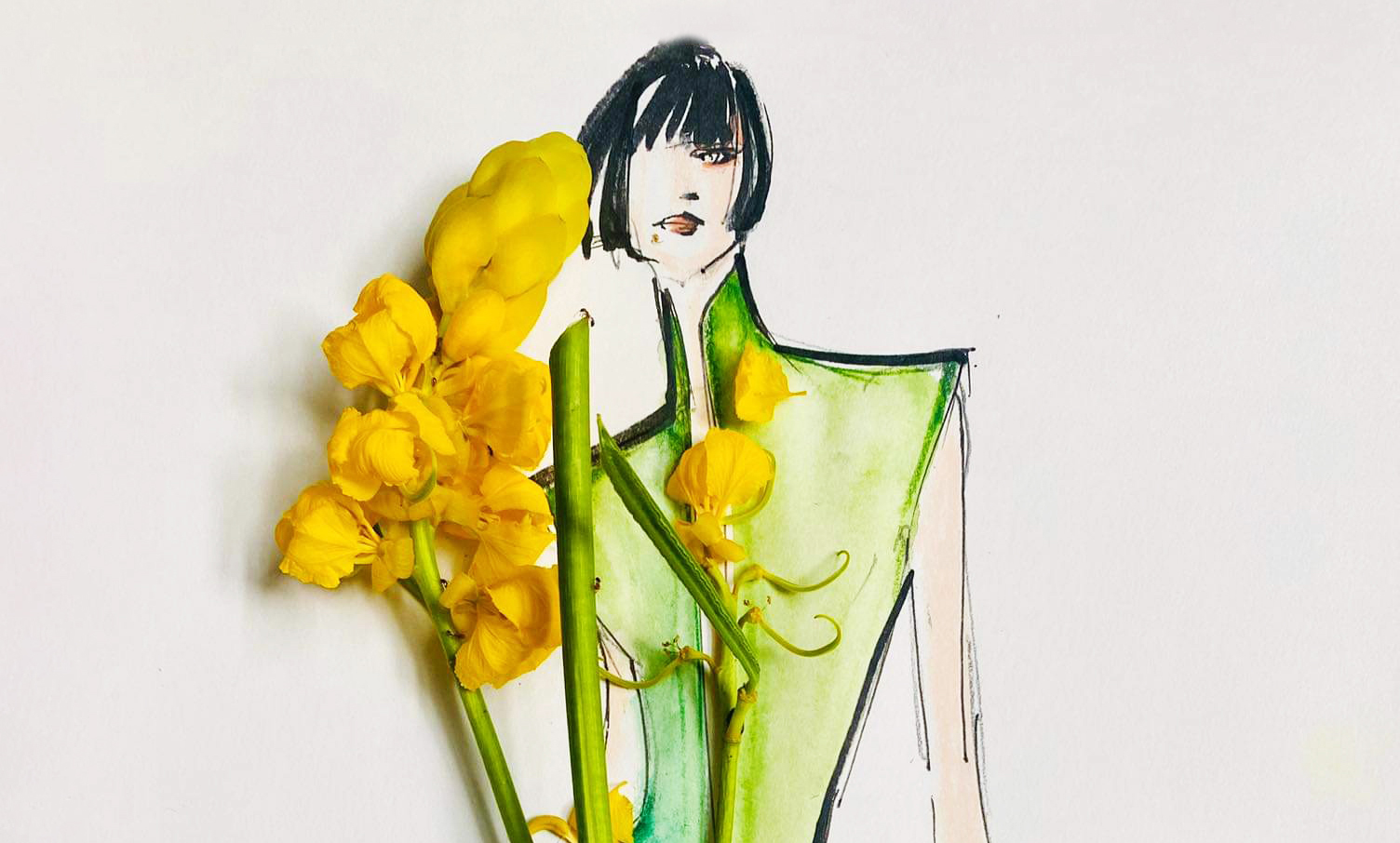
The Qipao, an iconic symbol of Chinese fashion, takes center stage as we celebrate the Lunar New Year of the Wood Dragon. This singular closely-fitted garment crafted from the most opulent silks originated in 1920’s Shanghai. ZEE fashion editor Oj Hofer, has sought the creative insights of some of the Philippines’ most innovative designers for their interpretation of the elegant Qipao, also known as Cheongsam.

Rajo Laurel, a luminary in Philippine design, draws inspiration from his petite garden, a source of boundless joy, as he reimagines the Qipao. “I sought to encapsulate the essence of wild blooms in my garden, seamlessly translating it into a Cheongsam of sumptuous raw silk,” divulges Laurel.
His creation, a paragon of refined, effortless elegance, showcases commanding shoulders, a continuous high neckline, and a dramatic décolletage, crafting a bold and contemporary silhouette. The organic silk, chosen with discerning intent, evokes sunlit days and the verdant opulence of summer foliage.
In a fusion of tradition and innovation, Laurel introduces 3D printed flowers, nonchalantly placed in asymmetrical harmony. These botanical accents elevate the sleek dress, offering a nod to modernity without compromising the Cheongsam’s timeless allure.
Rajo Laurel’s cheongsam design organically celebrates the New Year of the Wood Dragon. It is a testament to his ability to meld the grace of nature with sumptuous craftsmanship, producing an ensemble that pays homage to tradition whilst embracing the vanguard of contemporary design.
Fashion
To See and Be Seen: Philippine Terno Gala, A Celebration of Heritage and Couture
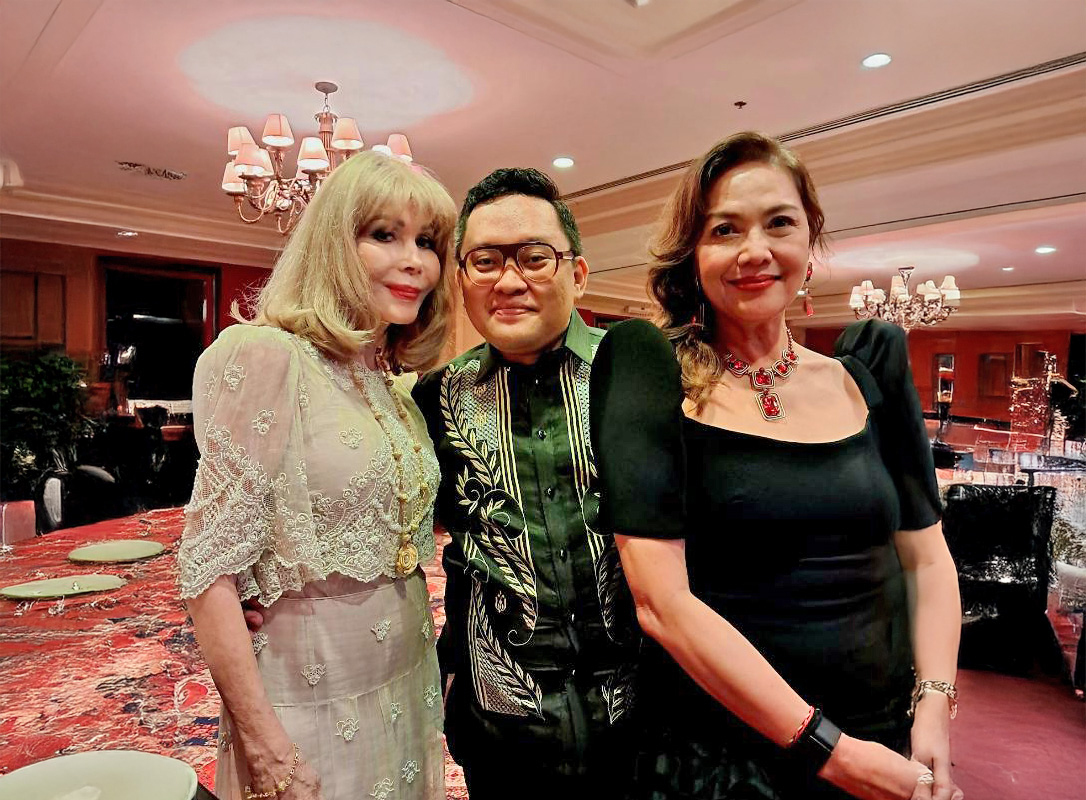
by Kingsley Medalla | photography Emmanuele Sawit
Fashion
Behind the Scenes: Backstage at The Philippine Terno Fashion Show 2025 in the Waterfront Cebu City Hotel & Casino
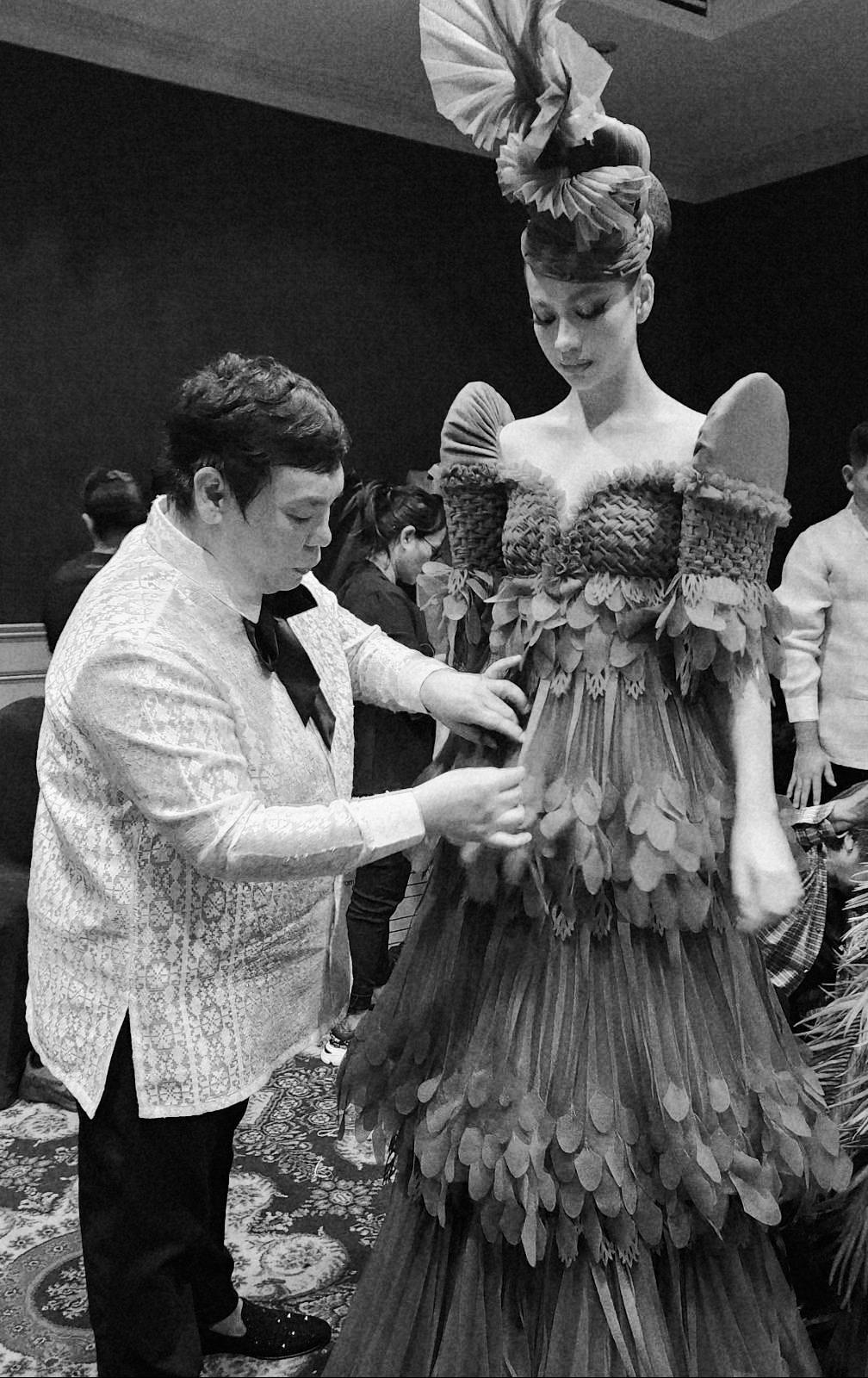
By Doro Barandino
What most people attending fashion events don’t realize is that the actual battleground happens backstage. Here’s a peek at the real magic that transpires among fashion designers, stylists, hair and make-up artists, dressers, and ramp models hours before showtime. In the recent Philippine Terno fashion show, a whole team of creatives in the fashion industry produced the most extravagant and whimsical recreation of the celebrated garment in the country’s cultural landscape.
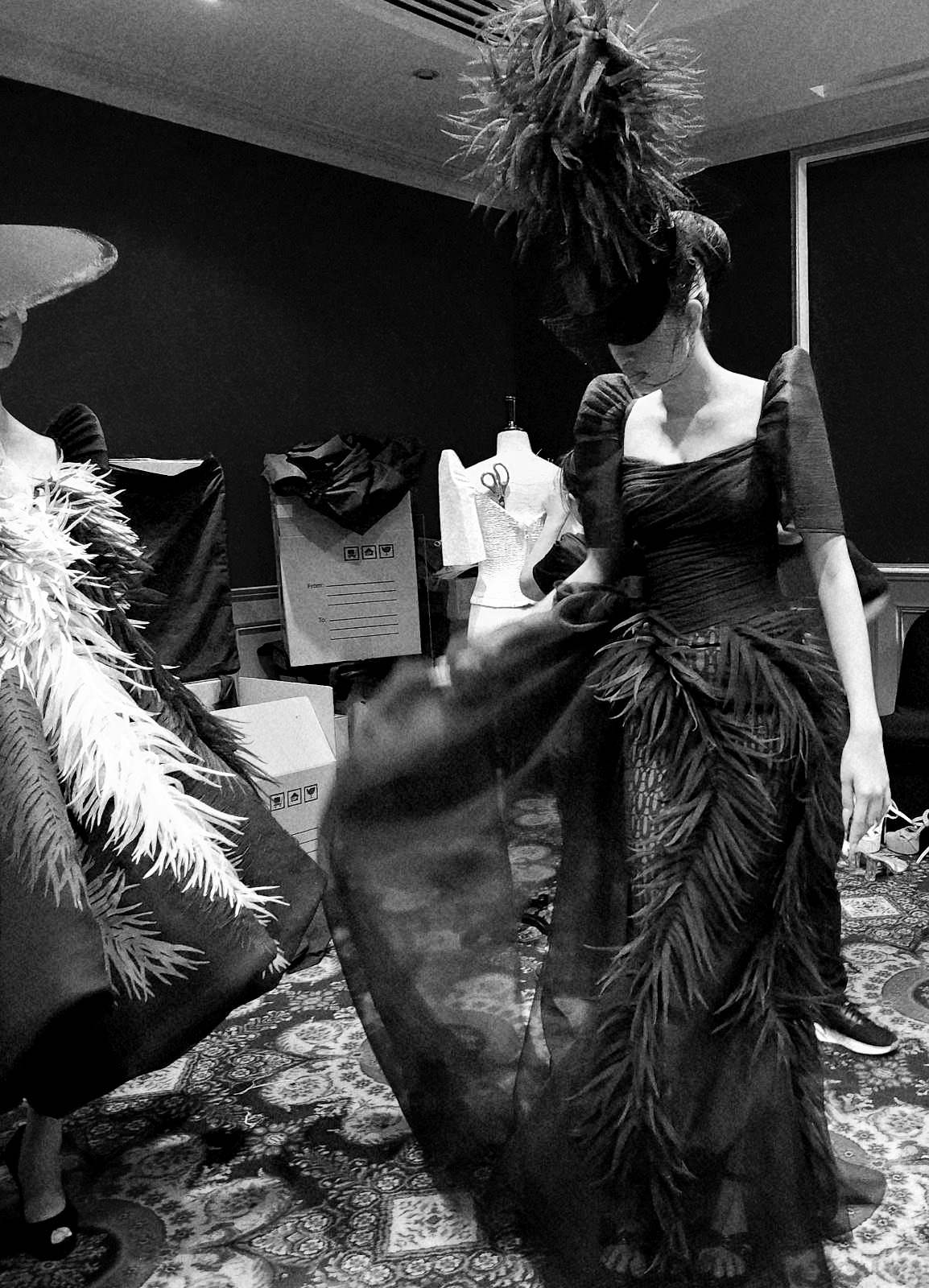
Fabric manipulation simulating bird feathers are the main features in Cary Santiago’s ternos.
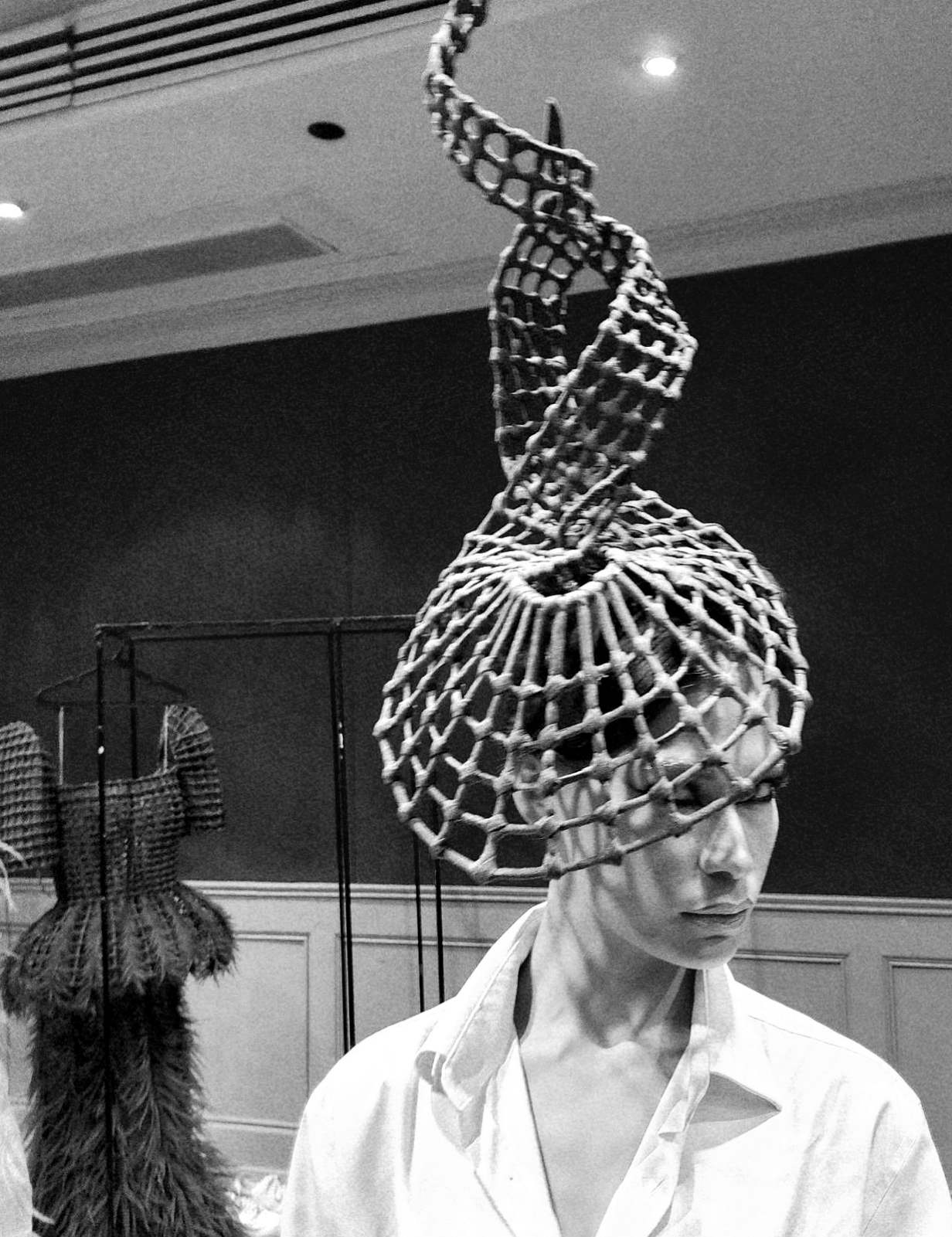
Mesh-like sculptural head accessories added to the visual impact of the designer’s collection.
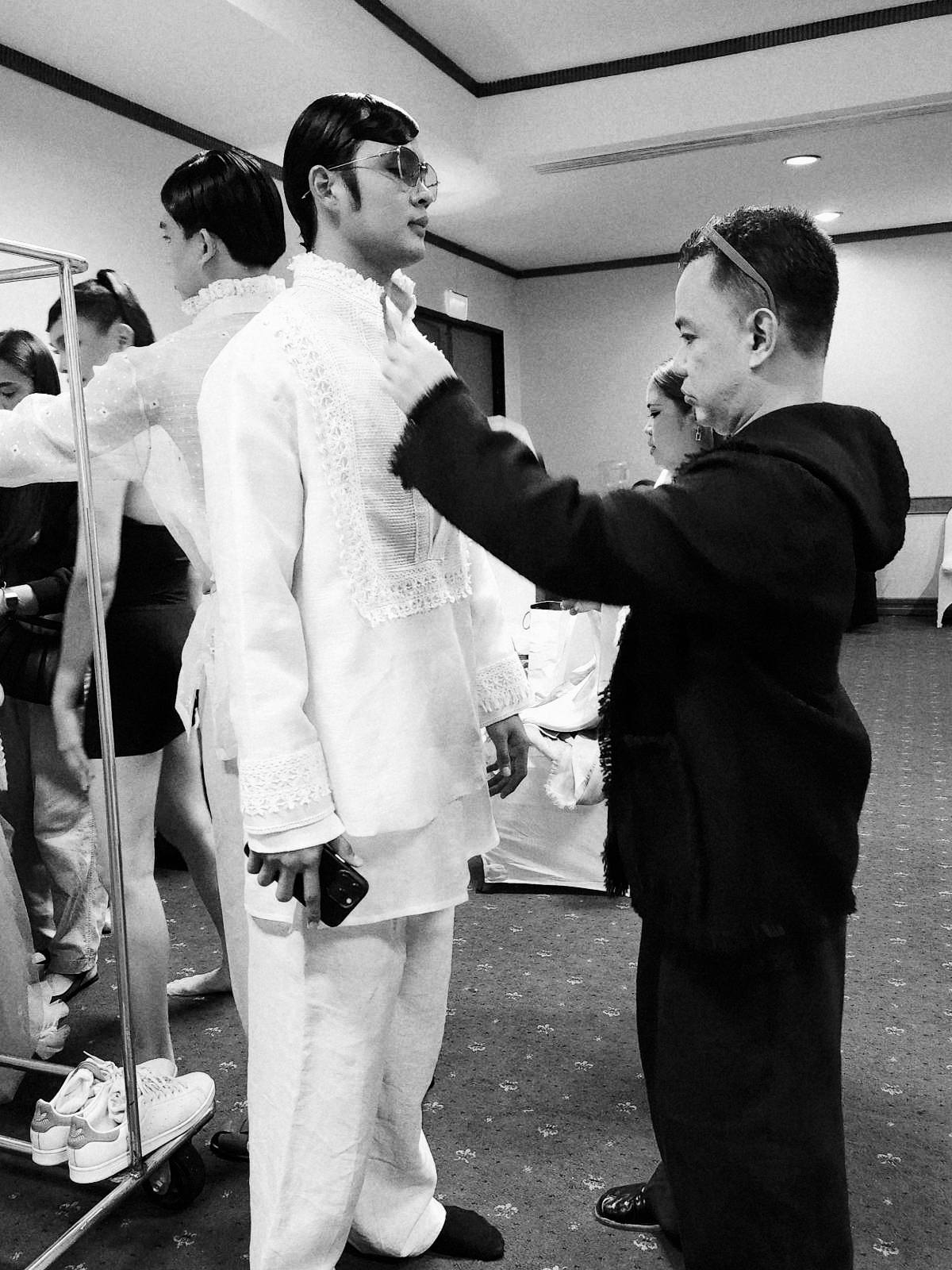
Jun Escario’s relaxed barong tunics are characterized by its fine embroidery on pinya fabric
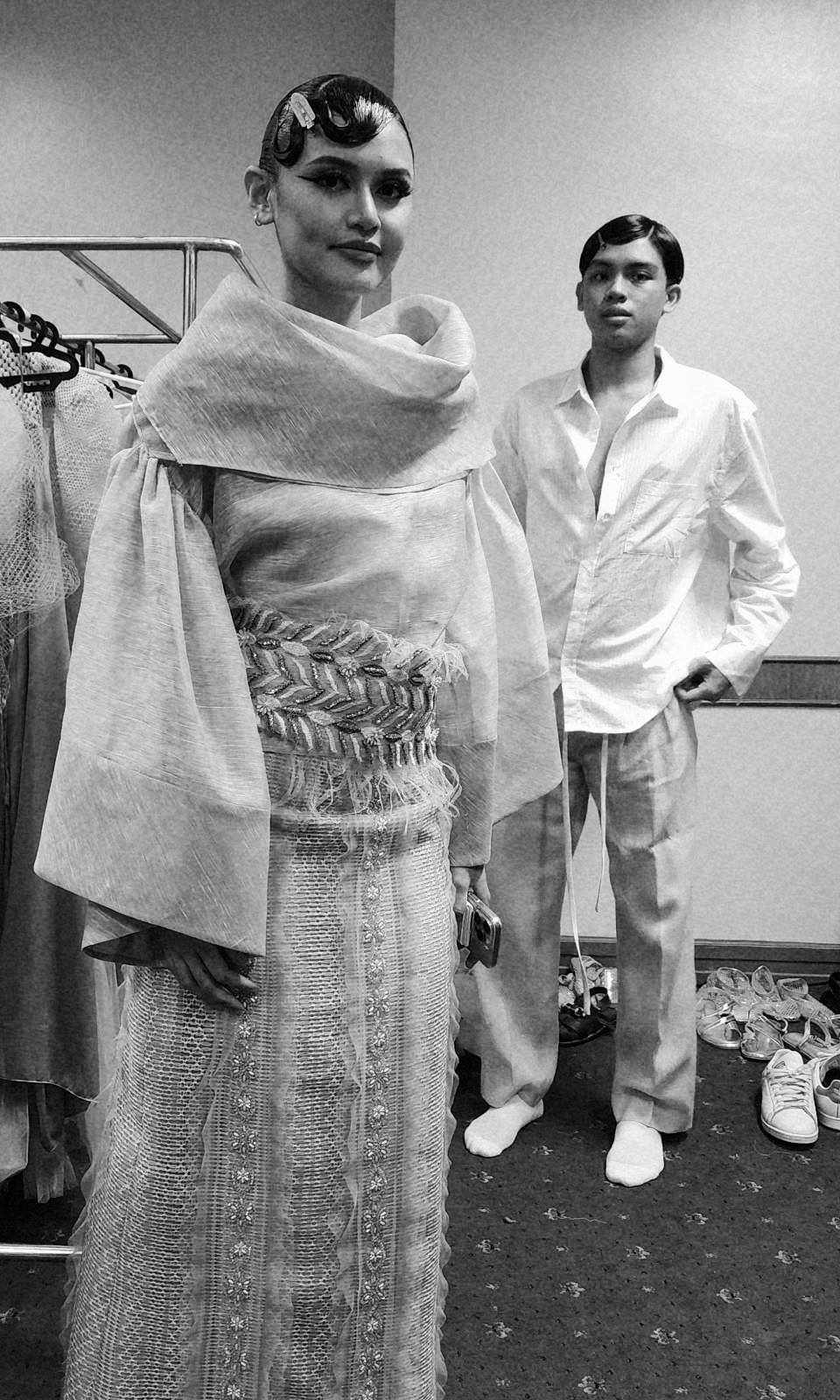
The modern kimona reinterpreted by Jun Escario.
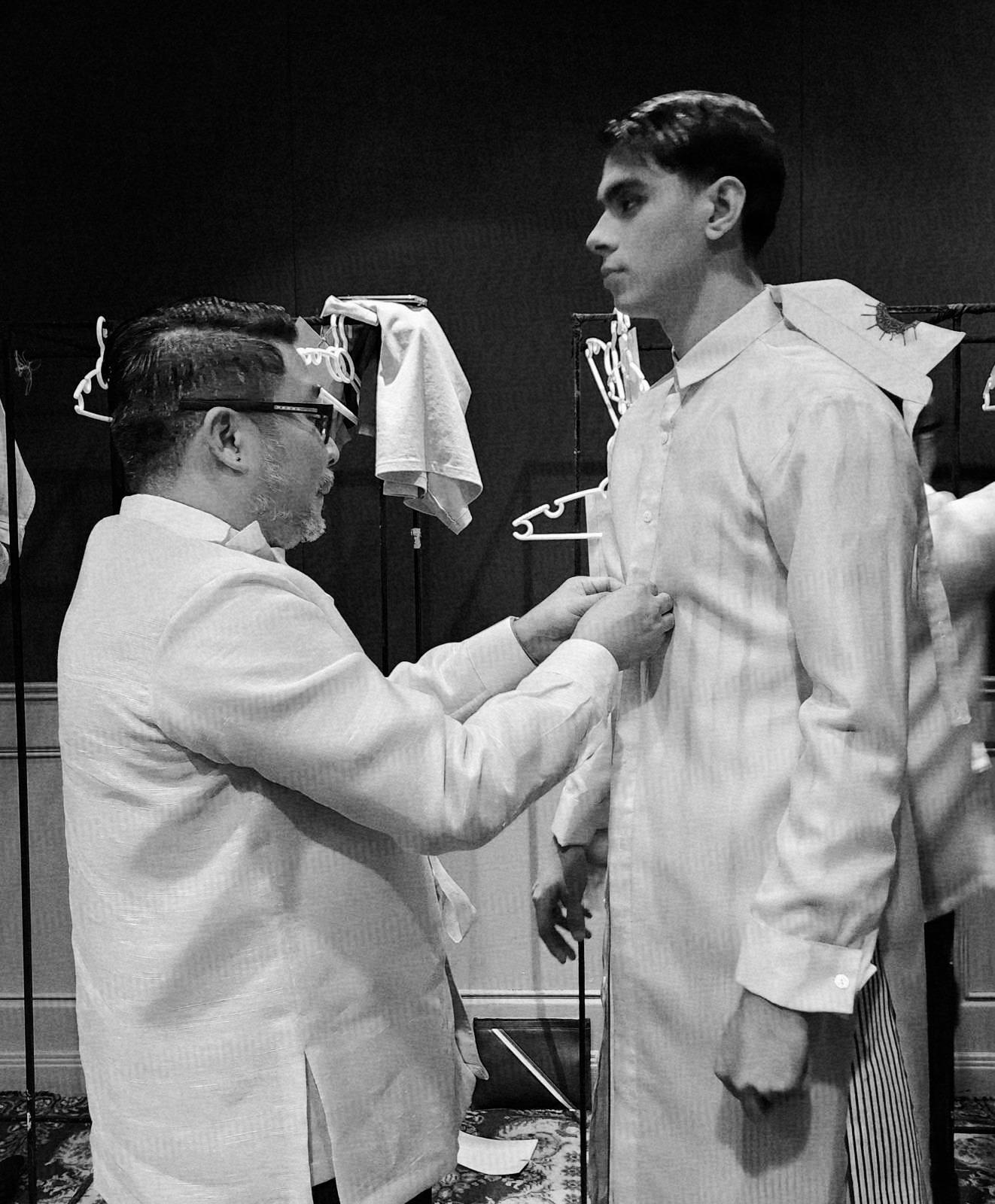
Edwin Ao’s take on the Barong is both linear and minimalist.
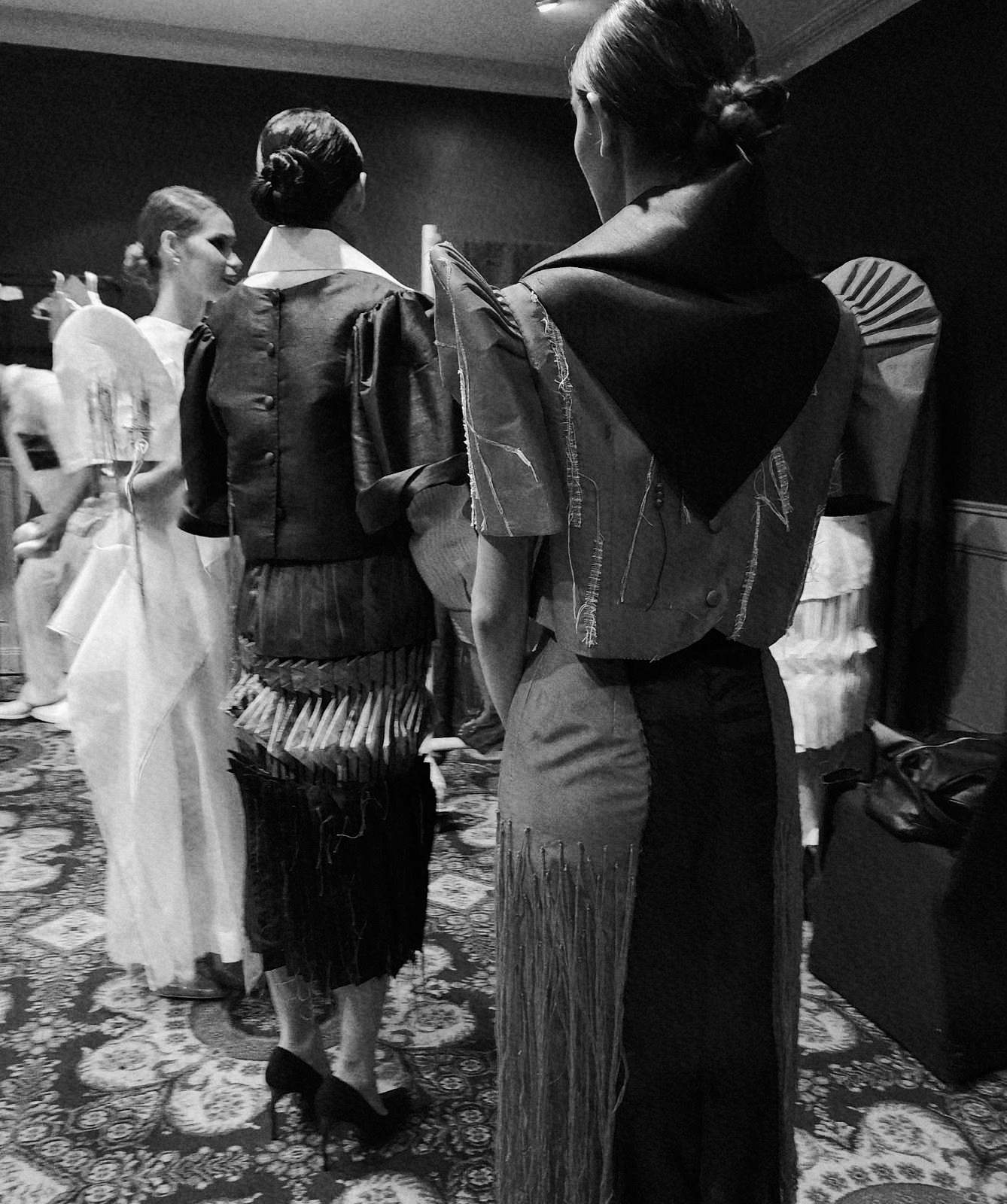
Edwin Ao ‘s modern version of the traditional baro at saya has architectural folds as its signature look.
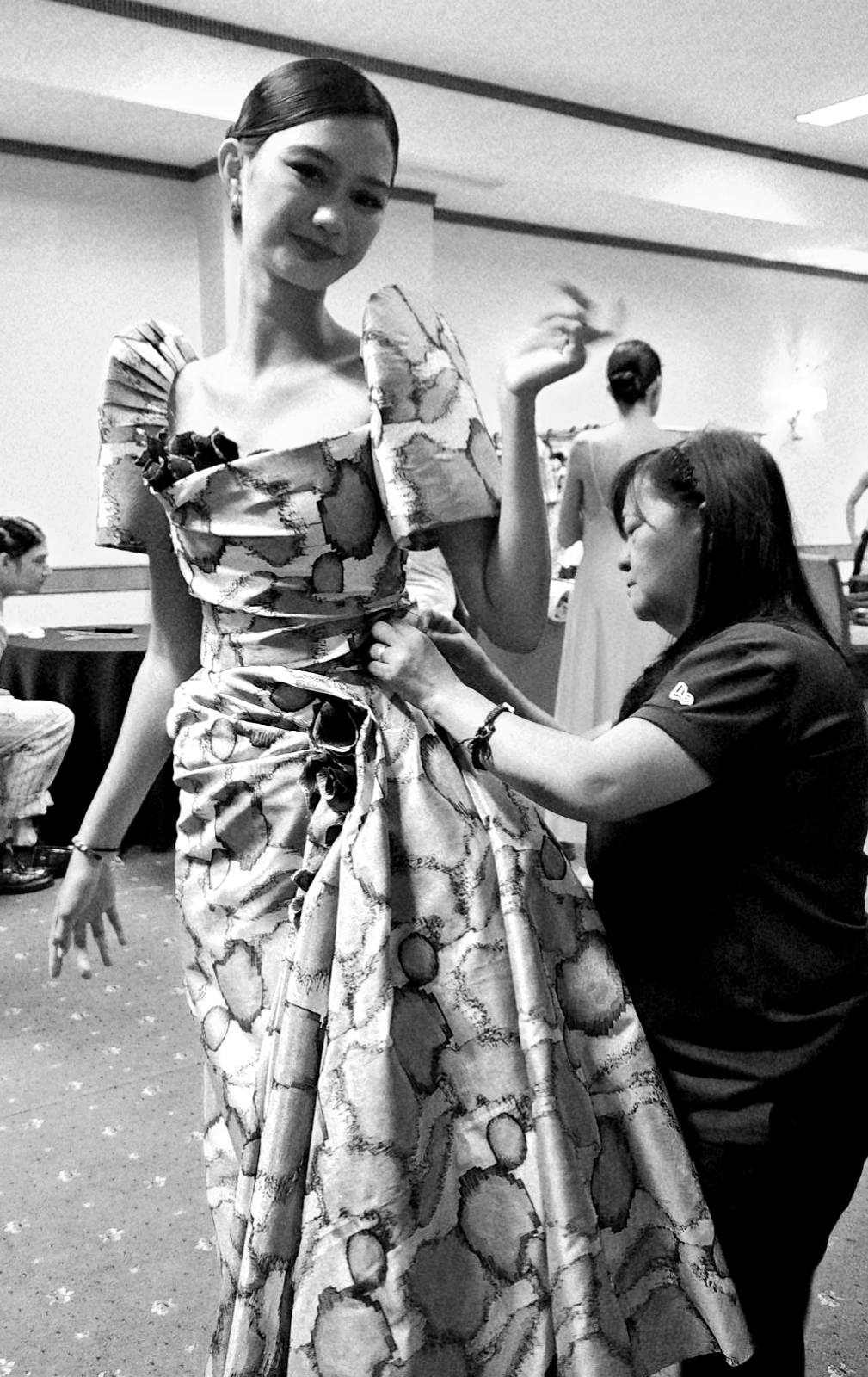
The classic terno has draping and printed silk fabric on Joji Lloren’s master class look
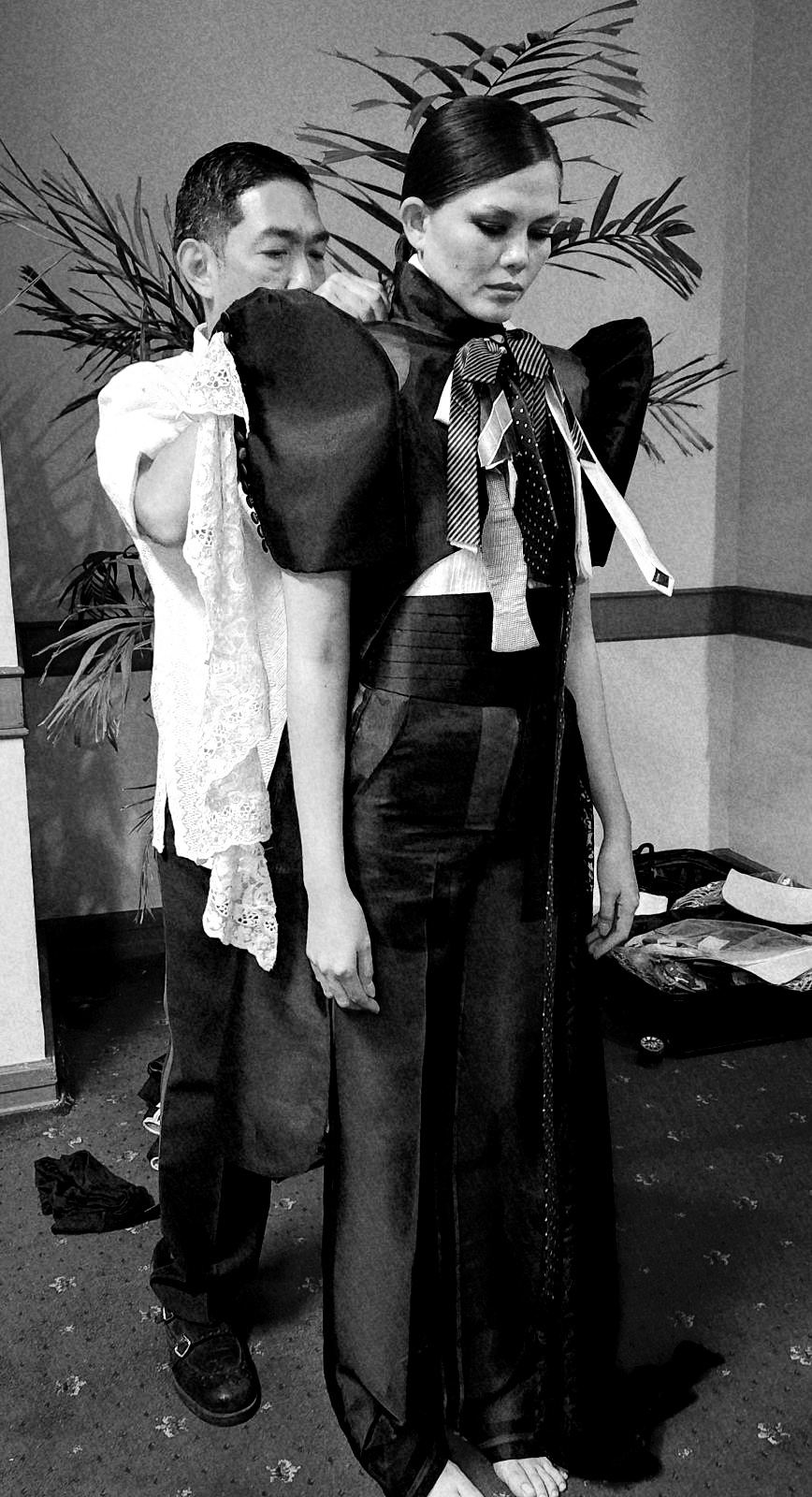
Joey Samson known for avant-garde designs has assorted neckties as an accessory to complement the color black.
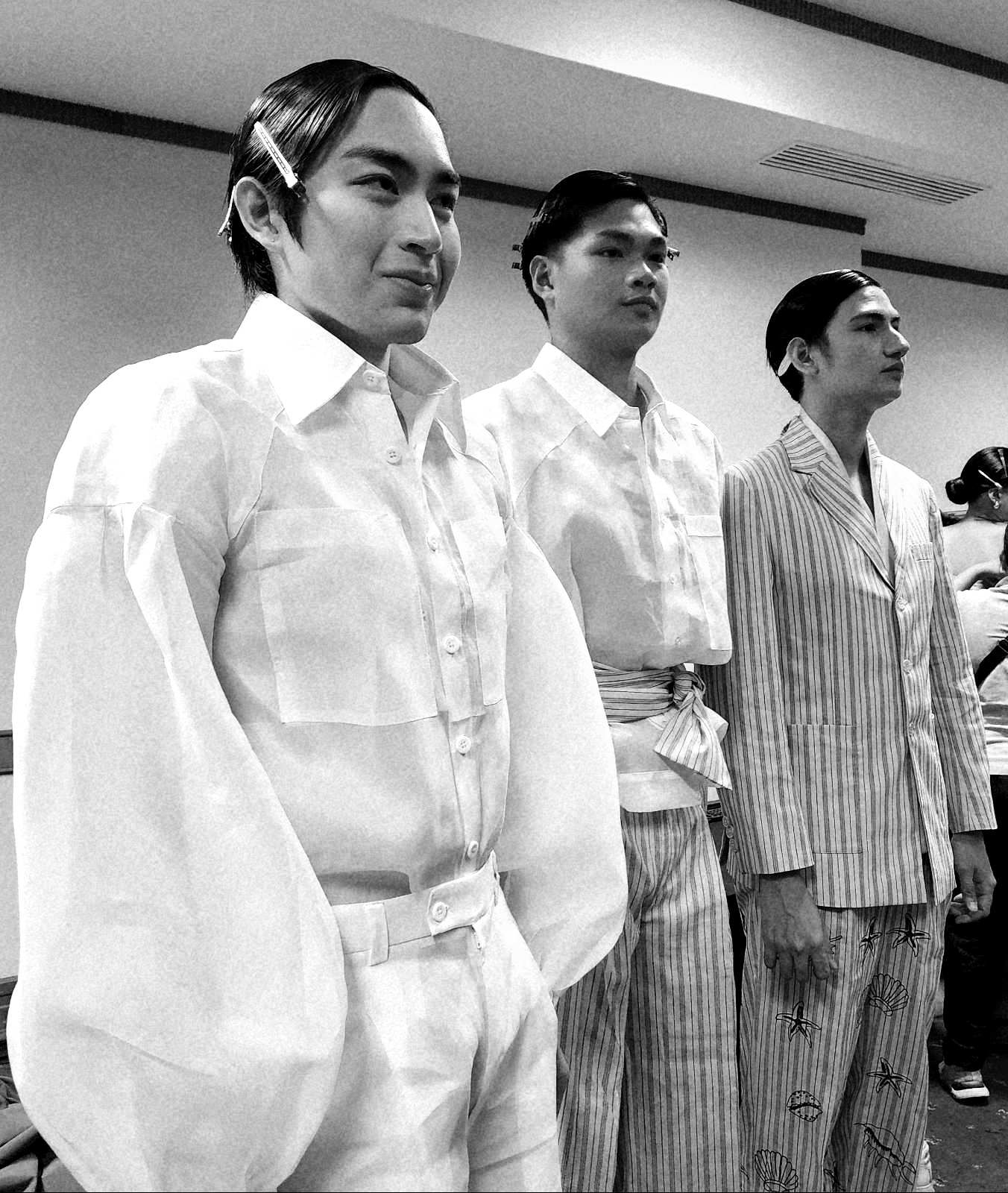
Protacio re-shaped the silhouette of the traditional barong Tagalog.

Joji Lloren added geometric patterns for a more contemporary look on the terno.
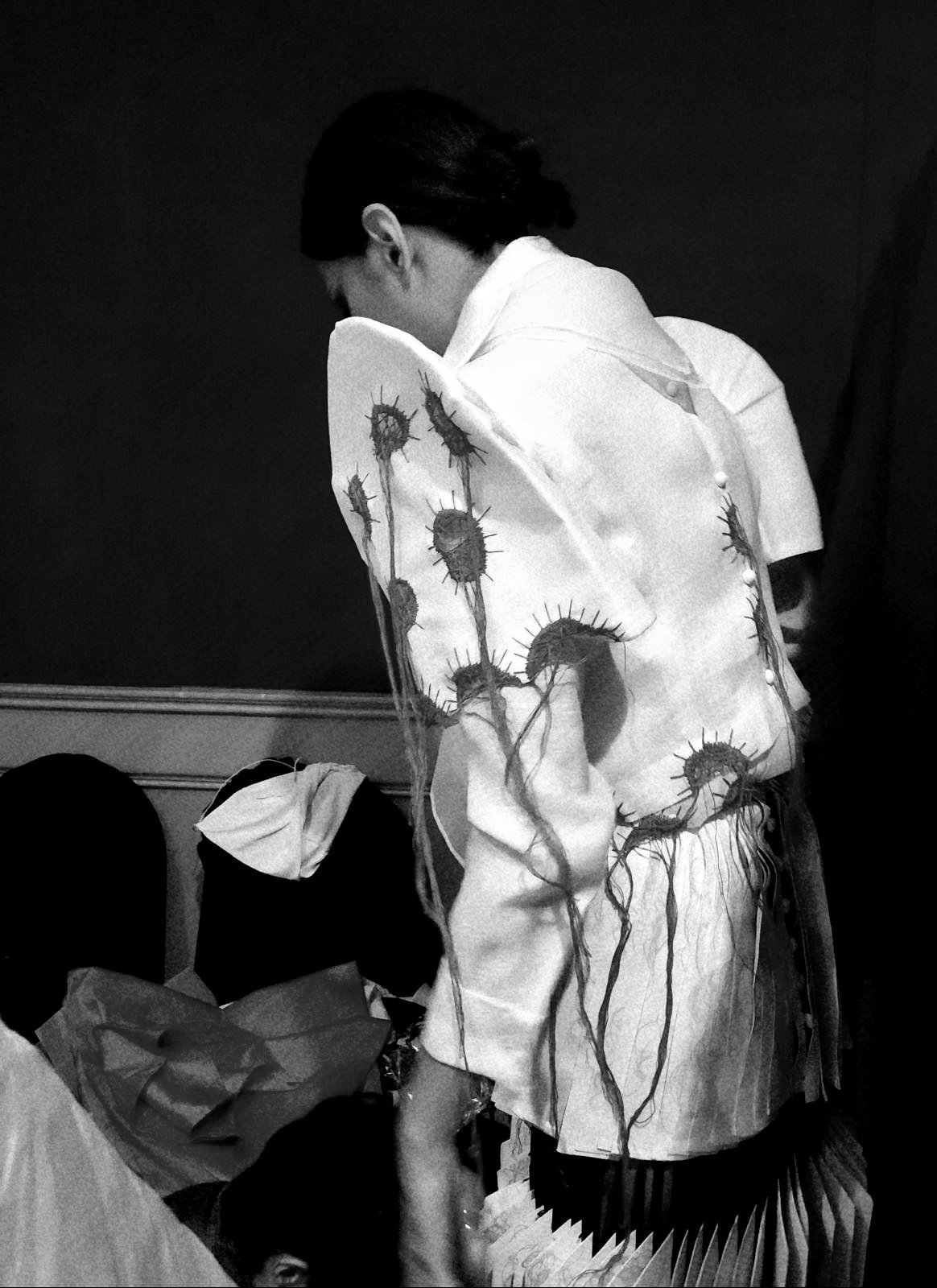
Unfinished stitches of embroidery leaving loose threads add movement and volume to Edwin Ao’s version of the terno
Fashion
Salt, Silk, and Stardom: Ten Reasons Celebrities Wear Amato by Furne One

by Oj Hofer
At Take Me to the Sea, Amato by Furne One unveiled more than a resort/bridal collection — he revealed a world suspended between tides and starlight, where salt, silk, and stardom stitched themselves into every look.
Held at The Hall of the Crimson Resort and Spa Mactan, the show was a transportive experience. As waves whispered beyond the glass, Amato’s gowns swept down the runway like sirens called to shore. Here are ten reasons why global icons return — time and again — to his sea of style.
1. Salt in the Craft
His garments carry the wild grace of the sea — textured, elemental, unforgettable. Every bead, cut, and crystal tells a story shaped by emotion and intuition.

2. Silk in the Movement
Though opulent, his creations float. There’s ease in the drama — cascading motion without weight. Ideal for performers who speak through movement.

3. Stardom in the Vision
Furne doesn’t chase trends — he conjures icons. His gowns command attention while allowing the wearer’s light to radiate.

4. Salt as Spirit
There is soul in the stitching — a deep undercurrent of cultural pride and personal mythology. His work carries weight because it carries truth.

5. Silk as Spellwork
His fabrics don’t just dress — they enchant. Each piece invites touch, reverence, and awe.

6. Stardom in the Silhouette
Furne understands form. He doesn’t simply clothe a figure — he sculpts for presence. For red carpets, concert stages, and film legends.

7. Salt of the Earth
Despite global acclaim, Furne remains grounded. His humility fosters collaboration, creating space for intimacy in the creative process.

8. Silk-Wrapped Strength
There is softness, but never fragility. These gowns are fierce — veiled in elegance yet unapologetically bold.

9. Stardom as Alchemy
Wearing Amato is not mere adornment — it is transformation. A star steps into a Furne One creation and becomes mythic.

10. Salt, Silk, and the Furne Himself
Furne One is the thread. With quiet charisma and a generous spirit, he doesn’t just dress celebrities — he disarms them. And from that space of trust emerges what every artist longs for: wonder.
And in Amato’s world, wonder always wins.

Fashion designer Furne One
-

 Style2 months ago
Style2 months agoHappy Melendres Traipsing Around Manhattan in Non-Stop Armani
-

 Arts & Culture3 months ago
Arts & Culture3 months agoKultura. Kapital. Kasalukuyan: Art that Speaks of Today
-

 Prime Target2 months ago
Prime Target2 months agoMiko Sarmiento: Turning Silk Scarves Into Works of Art
-
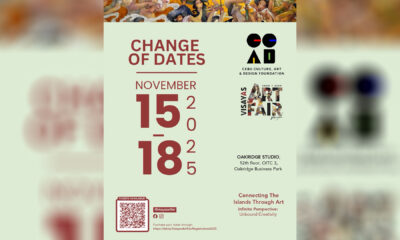
 Arts & Culture1 month ago
Arts & Culture1 month agoVisayas Art Fair Year 5: Infinite Perspectives, Unbound Creativity
-
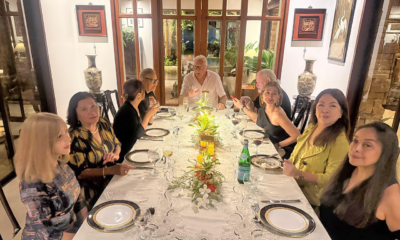
 The Scene3 months ago
The Scene3 months agoAnother Elegant Dinner at Chez Marguerite
-

 Prime Target3 months ago
Prime Target3 months agoLuna Vdl–Endless Summers in Siargao
-

 QuickFx3 months ago
QuickFx3 months agoI Lost It at the Movies: Five of the Most Significant Films of the 1960s
-

 Travel1 month ago
Travel1 month agoAutumn in Istanbul: Fellow Travellers Share Turkish Delights


